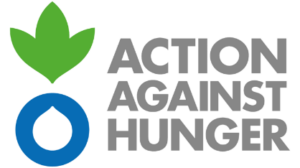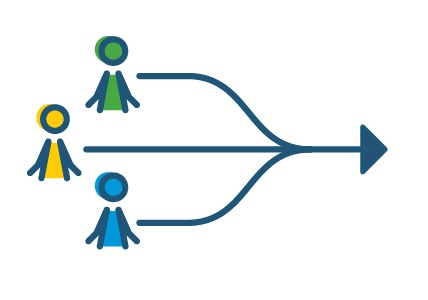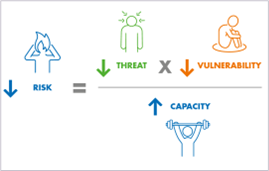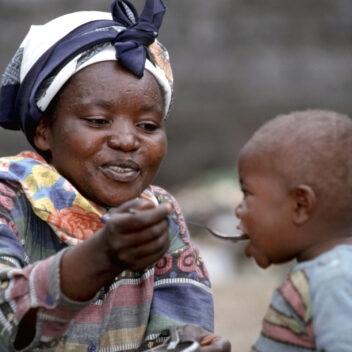 In an increasingly complex world where humanitarian challenges defy the boundaries of traditional sectors, multidisciplinary collaboration is essential to reducing protection risks and ensuring that protection risks do not undermine other humanitarian outcomes. Action Against Hunger (ACF) has embraced these approaches in their recent project, Protection Integration in Nutrition Security (PiiNS). This project was born out of ACF’s recognition that while protection risks are central to people meeting their needs and accessing their rights, there is a lack of communication between protection and nutrition security actors; there is also a scarcity of tools focused on protection outcomes that could be readily adopted by non-protection actors to enable effective response.
In an increasingly complex world where humanitarian challenges defy the boundaries of traditional sectors, multidisciplinary collaboration is essential to reducing protection risks and ensuring that protection risks do not undermine other humanitarian outcomes. Action Against Hunger (ACF) has embraced these approaches in their recent project, Protection Integration in Nutrition Security (PiiNS). This project was born out of ACF’s recognition that while protection risks are central to people meeting their needs and accessing their rights, there is a lack of communication between protection and nutrition security actors; there is also a scarcity of tools focused on protection outcomes that could be readily adopted by non-protection actors to enable effective response.
Owing to recurrent prolonged crises where protection risks are intrinsic to people attempting to meet their needs and access their rights, it is vital to acknowledge the need for an integrated approach to humanitarian interventions, focused on both protection and nutrition security. An integrated approach makes it possible to, on the one hand, offer a holistic approach to people’s needs and, on the other hand, ensure that these interventions are targeted to properly protect the most vulnerable.
ACF, PiiNS General Guidance
 The PiiNS project aimed to develop and incorporate a framework to integrate protection into ACF’s nutrition security strategies and interventions globally. It sought to reinforce staff capacities by cultivating their holistic understanding of people’s well-being and by developing user-friendly tools to facilitate their thinking about protection outcomes. Based on the review of key technical and institutional nutrition security as well as protection methodologies, ACF designed a toolkit to guide staff and other humanitarian actors in the assessment and identification of protection risks and the integration of protection activities into their existing strategies and interventions. ACF piloted these approaches in 2022 in Burkina Faso and the Democratic Republic of Congo (DRC). This case example demonstrates how ACF was able to foster a culture of collective responsibility for protection, build technical resources and staff capacity on protection, and achieve both protection and nutrition security outcomes.
The PiiNS project aimed to develop and incorporate a framework to integrate protection into ACF’s nutrition security strategies and interventions globally. It sought to reinforce staff capacities by cultivating their holistic understanding of people’s well-being and by developing user-friendly tools to facilitate their thinking about protection outcomes. Based on the review of key technical and institutional nutrition security as well as protection methodologies, ACF designed a toolkit to guide staff and other humanitarian actors in the assessment and identification of protection risks and the integration of protection activities into their existing strategies and interventions. ACF piloted these approaches in 2022 in Burkina Faso and the Democratic Republic of Congo (DRC). This case example demonstrates how ACF was able to foster a culture of collective responsibility for protection, build technical resources and staff capacity on protection, and achieve both protection and nutrition security outcomes.
Protection Integration involves incorporating protection objectives into the programming of other sector-specific responses (beyond the protection sector) to achieve protection outcomes. Integrated protection programming requires all humanitarian actors to commit, wherever feasible and appropriate, to a protection objective in the design of their activities. It can therefore support the system-wide commitment to the centrality of protection, because it relies on protection and non-protection actors to work individually and collectively as part of a multi-sector humanitarian response.
NURTURING A COLLECTIVE RESPONSIBILITY FOR PROTECTION
During the initial stages of the project in Burkina Faso, the ACF PiiNS team found that their primary challenge was to convince nutrition, health, Food Security and Livelihoods (FSL), and WASH field teams of the benefits of protection integration, since teams assumed that this new way of thinking would require them to conduct additional activities that weren’t part of their job description, deplete their budgets, and detract from their core project objectives. However, the country leadership recognized at the outset the value of nurturing the staff’s capacity on protection mainstreaming and integration and encouraged them to engage.
ACF observed that staff trainings on protection integration and deep engagement of staff in protection risk assessments and planning were critical to shifting their perceptions of the protection integration approach and willingness to adopt it. Initial trainings on the core principles of protection mainstreaming and integration were instrumental in compelling teams to recognize that protection was a part of everything that they do; not only could their own programming either exacerbate or mitigate protection risks, but protection risks could also undermine their own project outcomes. This realization encouraged teams to embed protection more centrally in their work. For example, the teams learned that even if ACF was providing health services at a local clinic, people would not be willing to address their health needs if they felt that the route to the clinic was too dangerous to travel.
Our field staff were happy to be able to provide more comprehensive support. A nurse said to me that before having this knowledge, if someone was hurt, she could only take care of the injury, and that’s it. But after she had the PiiNS training, she had a new understanding of how to prevent violence and refer people to other relevant services to address their protection needs.
Alassane Abdou Djibo, ACF PiiNS Project Lead, Burkina Faso
The PiiNS approach also sought to engage diverse staff in all elements of protection analysis and implementation of activities. To this end, the ACF PiiNS team supported the Burkina Faso team to embed questions on protection risks and needs into their existing needs assessment tools, which made the team increasingly comfortable asking these protection questions. The team also found that having those conversations directly with communities expanded their understanding of what really matters to communities and deepened their appreciation for how protection issues were affecting other elements of their interventions.
Following these assessment activities, teams participated in analysis workshops to map the protection risks that they identified, prioritize them according to severity in the community, and generate possible solutions. The teams were able to brainstorm numerous ways that they could reduce community exposure and address protection risks without requiring additional human and budgetary resources. Prior to their involvement in the PiiNS project, the teams had viewed issues of child labor, early marriage, and restricted freedom of movement as beyond the scope of their work. Once they became active participants in protection analysis and planning, they came to understand not only that these issues were deeply intertwined with their own programming, but also that they could undertake small initiatives within their own means to address these protection issues.
DEVELOPING CAPACITY FOR PROTECTION ANALYSIS AND RESPONSE
The team also required the capacity to conduct the protection analysis and design and implement a response. The PiiNS project sought to build this capacity through the development of technical tools, staff trainings to nurture new skills, and the addition of dedicated Protection Officers. The ACF PiiNS team started by undertaking internal and external consultations with nutrition, WASH, health, and FSL staff and clusters to build on existing tools and approaches. ACF subsequently developed a series of protection assessment data collection and analysis tools, including interview and focus group discussion guides, a direct observation form, and a risk analysis matrix, as well as guidance for their deployment. Through initial piloting, the Burkina Faso team determined that the process was too heavy and slow to implement in their emergency response context. The ACF PiiNS team worked collaboratively with the Burkina Faso team to simplify and adapt the tools to enable a swifter response.
 Trainings on protection mainstreaming and integration were also essential to developing the team’s skills and confidence to use these tools and undertake protection activities. These trainings focused on core protection principles, the risk equation, and issues of power and inclusion. The PiiNS project also undertook stakeholder mapping exercises to identify specialized protection services already available in the community. As a result, project staff—whether a nurse, WASH community mobilizer, psychologist, or distribution manager—was able to identify people with protection risks, use PiiNS tools to directly support them, and refer them to relevant protection service providers. Where relevant, ACF developed new materials and provided specific training on the key topics related to GBV and child protection, such as early marriage and child labor, so that community mobilizers had sufficient information to include awareness raising on these issues into their existing nutrition security sensitization campaigns.
Trainings on protection mainstreaming and integration were also essential to developing the team’s skills and confidence to use these tools and undertake protection activities. These trainings focused on core protection principles, the risk equation, and issues of power and inclusion. The PiiNS project also undertook stakeholder mapping exercises to identify specialized protection services already available in the community. As a result, project staff—whether a nurse, WASH community mobilizer, psychologist, or distribution manager—was able to identify people with protection risks, use PiiNS tools to directly support them, and refer them to relevant protection service providers. Where relevant, ACF developed new materials and provided specific training on the key topics related to GBV and child protection, such as early marriage and child labor, so that community mobilizers had sufficient information to include awareness raising on these issues into their existing nutrition security sensitization campaigns.
Finally, ACF found that a dedicated Protection Officer was essential to providing ongoing technical support throughout the PiiNS project. Teams were initially resistant to this idea due to a lack of funding to hire additional staff members, and the PiiNS project initially envisioned that teams would be able to autonomously implement protection integration activities. However, teams saw the value of embedding a Protection Officer at the country level and ultimately found the resources to fund the position. Moreover, ACF is currently in the process of hiring additional protection staff at the HQ level with the aim of sustainably bolstering their global institutional capacity to contribute to protection outcomes.
ACHIEVING PROTECTION AND NUTRITION SECURITY OUTCOMES
The PiiNS approach enabled the Burkina Faso team to identify a range of protection issues, including early pregnancy, forced marriage, and physical and psychological violence against women. They also found that children were at particular risk of experiencing violence at water points, child labor, and difficulties acquiring civil documentation that would enable them to access critical services. Team members across all sectors—nutrition, WASH, health, and FSL—collaborated to design activities that could mitigate these risks. As a result, the team began integrating relevant topics—including child protection, the consequences of forced marriage and early pregnancy, and information on accessing documentation through the civil registry—into their existing sensitization efforts with young mothers. They established a fund for Individual Protection Assistance to enable emergency cash support for women seeking urgent medical care and trained water management committees to identify vulnerable children at water points, prevent violence against them, and refer them to relevant services.
Moreover, the PiiNS approach enabled teams in Burkina Faso and the DRC to assess how protection risks were impeding the effectiveness of their existing programming. In both contexts, ACF teams had established clinics to provide healthcare services to the community but found that the most vulnerable people were not coming to the clinics because they considered the route too dangerous. ACF adapted their approach to a mobile response to address the protection risk and better respond to local health needs. Similarly, in the DRC, ACF WASH teams constructed individual household latrines but learned that women in the household weren’t using them. Through the protection assessment, the team learned that cultural norms prohibited married women from using the same latrine as her husband’s family. These women instead opted to go to secluded areas to tend to their hygiene but were often exposed to sexual violence as a result. The team subsequently adapted their approach to build two latrines per household, achieving both protection and WASH outcomes in the process. A satisfaction survey suggested that target communities felt that the PiiNS approach enabled their concerns to be more centrally considered in the programming.
In the next phase of the PiiNs project, ACF is planning to expand these models across its country programs. It is working on developing protection indicators that teams can more systematically integrate into their existing MEAL frameworks to enable the measurement of protection outcomes moving forward.
- RBP POINT:
Check out the GBV Prevention Evaluation Framework for more resources on how to measure protection outcomes.
CLICK HERE TO EXPLORE OTHER CASE EXAMPLES OF RBP IN ACTION
READ MORESign-up
"*" indicates required fields
